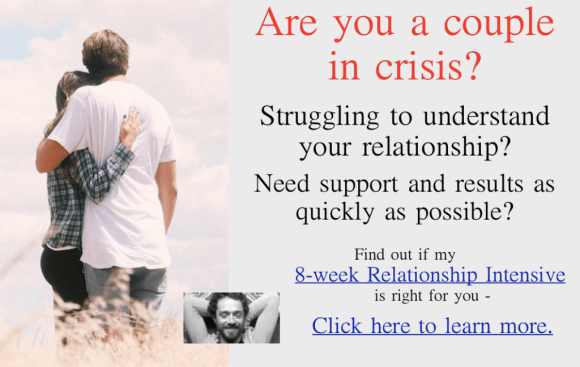 The word “resolution” once meant “to loosen or release”
The word “resolution” once meant “to loosen or release”
The word resolution comes from the Latin re (again) and solvere (to loosen or release). Today the meaning has reversed; resolution is now understood to mean a tightening or holding. This reversal of meaning is perhaps most clearly exemplified in our New Year’s Resolution ritual where we hold tight to the ego’s heroic efforts against the world’s workings upon us and pit our force of will against every and all other voice, intelligence, or influence that might challenge these efforts.
One consciousness or many?
Ego consciousness is connected to the Hero archetype, and the Hero archetype recognizes only its own ego consciousness. The multitude of other archetypal modes of consciousness – for example the modes of Trickster, Crone, Lover, Martyr, Magician – are either unrecognizable to the Heroic/Egoic mode (they simply do not exist) or they are condemned, demonized. If heroic consciousness cracks or breaks open – usually due to loss, illness, failure, or other tragic events beyond our control – and other modes of consciousness slip in, they tend to be forced out as soon as The Hero’s strength returns.
Our modern New Year’s Resolution ritual can be seen as the blanket denial of any mode of consciousness other than Ego consciousness, and the redoubled fight against any archetypal voice that is not The Hero’s.
According to available statistics, around eight percent of new years resolutions stick, which should perhaps put the Heroic/Egoic approach into some perspective, and yet because ego-consciousness recognizes only itself, the only option available to it is to redouble its efforts at eliminating all else.
This is not to say there’s something “wrong” with the New Year’s Resolution ritual, but rather to point out its associations and limits, and suggest a possible return to origins of meaning. What if we revisited the original understanding of resolution? What if the New Year’s Resolution wasn’t merely a ritual glorification of the egoic heroism that is our cultural default, but rather a ritualized annual return to “loosening and releasing?”
What (or who) is asking to be let loose or released in your life?
What (or who) has the Heroic Ego been holding captive?
Looking beyond The Hero – A different kind of resolution
The Hero takes on more burden and responsibility than is actually theirs, and this blinds The Hero to the existence and workings of the endless number of other archetypal modes of consciousness. We do not often release The Hero of their duties until we have no choice, until The Hero has been killed or otherwise conquered by life (or death) and we find ourselves suddenly in unfamiliar territory, subject to other forces.
A yearly ritual “releasing” could give The Hero a much needed break, and if The Hero was released of their duties, if we were able to loosen our grip on the Heroic/Egoic consciousness that we rely on daily, who else might step in? Which other voices, characters, and personalities could we come to know in the absence of the familiar?
If the trickster made a New Year’s Resolution, what would it be? How about the Crone? Or the Lover? The Martyr or Magician? Who are the other other personalities silently buried in you? What are the desires of these other characters? What do they offer and what do they demand? What would they say if The Hero loosened its grip at the turn of the year and allowed them a voice?
Like what you’re reading here?
You’ll love my new book.
Read the first 10 pages free.
 Trying to grow, fix, change, understand or save your marriage? I provide couples therapy, marriage counselling, coaching and mentoring to individuals and couples on the issues that make or break relationships – Sessions by telephone/skype worldwide. Email justice@justiceschanfarber.com to request a client info package. www.JusticeSchanfarber.com
Trying to grow, fix, change, understand or save your marriage? I provide couples therapy, marriage counselling, coaching and mentoring to individuals and couples on the issues that make or break relationships – Sessions by telephone/skype worldwide. Email justice@justiceschanfarber.com to request a client info package. www.JusticeSchanfarber.com
Sign up to get my articles by email –
Want to share this article? Use the buttons below.





